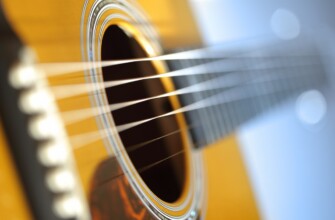How to Write Cinquains Properly

The basic task of a cinquain is to learn how to think as much capaciously as possible being able, at the same time, to express your thoughts in a brief form.
For this purpose there exist two basic rules of writing a cinquain. The first rule of writing classic cinquains implies strict accounting of syllables in each of the five lines.
The second rule, being more up-to-date and widespread, is didactic. It is now widely used in educational institutions of many countries with educational purposes. We’ll start with the classic rule of writing cinquains.
Classic cinquains
Classic (traditional) cinquain consists of 22 syllables and 5 lines. At the same time, the number of syllables is strictly predetermined and has to be accounted for in each line separately. [adrotate group=”2″]
It is easy to count syllables. It is the same as in writing hokku where you can simply count syllables according to the number of vowels in words.
The first line of a classic cnquain has to comprise two syllables, the second – four, the third – six, the fourth – eight, and the fifth – again two. It means that every next lie is a bit longer than the previous one, the fifth being a resume of the whole cinquain. Graphically, the arrangement of syllables in the 5 lines in a traditional cinquain can be shown the following way (2-4-6-8-2).
I have never written a classic cinquain, paying attention to the syllable count but I’ll try to make one, in order for you to understand the issue of counting syllables a little bit better.
Example of Writing a Traditional Cinquain
[adrotate group=”1″]Wind
It plays
It plays with lives
Pushes ships on the rocks
Grief…
It doesn’t seem too poetic but you can always do a little better, like:
Wind
It kindly plays
And gambles with our lives
It pushes ships on the rocks
Grief…
Such classic type of cinquain is not used frequently and is difficult to be written. Nowadays, classic cinquain is not so popular and we will not try to write one. Although, you can, of course, try to write a classic cinquain for yourself as we move on.
Later, other than classic forms of cinquains were established on the basis of syllables count:
Reverse cinquain which is written with the opposite sequence of syllable count (2-8-6-4-2).
Mirror cinquain is a regular cinquain followed by another reverse cinquain.
Butterfly cinquain contains 9 lines. The fifth line serves the first line of the next reverse cinquan so, written on paper, this cinquain reminds a butterfly.
Crown cinquain represents five classic cinquains written on the same topic and forming a short story.
[adrotate group=”3″]Garland cinquain is the sixth cinquain made up of a garland cinquain. The first line of this cinquain is the first line of the first cinquain, the second line – is the second line taken from the second cinquain and so on.
We won’t try to write any of the above-mentioned types of cinquans. Now, we’ll take a look at a modern type of cinquains – didactic cinquain. This is the type that is studied at school and is used for intellect and imagination development.
Didactic Cinquain
Didactic rule of writing a cinquain has been elaborated much later, in the process of writing cinquains in American education.
As it turned out, the new didactic form of writing cinquains promotes the ability to analyze, creative thinking, and speech and is good for making nice, meaningful, and wise poems.
In writing a didactic cinquain, the number of syllables does not matter. For a didactic cinquain, the most important thing is meaning and parts of speech used in each line.
Rules of Cinquains
Rules of writing a didactic cinquain:
The first line has to reveal the topic of the cinquain. Usually it is a phenomenon or an object. More often than not, the first line contains only one word, but sometimes a word-combination may be used here. As for the part of speech, it is a pronoun or a noun and answers the question Who? What?
The second line contains two words or a word-combination which characterize the given object or phenomenon. As for the parts of speech, these usually are participles or adjectives that answer the question Which? What kind?
The third line contains three (sometimes word-combination) which characterize the actions of the given phenomenon or object. As for the parts of speech, these usually are adverbial participles or verbs that answer the question What is it doing?
In the fourth line, the author expresses thoughts about the given topic. Sometimes it may be a well-known aphorism, phrase or something like that, sometimes even a small poem. The most common phrase consists of four words, although it is not obligatory. 3-5 words is also a norm. Sometimes longer lines may be used to express author’s thoughts.
[adrotate group=”4″]The fifth line, again, contains only one word or word-combination. This is a kind of a resume of the whole poem reflecting the essence of the object or phenomenon described in the cinquain and author’s opinion. As for parts of speech, nouns and pronouns, that answer the question Who? What? are used here. This line often represents a good topic of the next cinquain.
At the same time, rules of writing a cinquain are mostly recommendations. Authors, if needed, may not stick to these rules, in order to make a better and more meaningful poem. Sometimes, instead of three words in the third line, authors use two words, word-combination instead of one word or one part of speech instead of the other. Sticking to the rules is not obligatory if, in the end, we get a great poem.
Sometimes, in order to develop child’s speech abilities, two, three or even four words related to the topic of the cinquain may be used in the fifth line. It is also acceptable.
Example of Writing a Didactic Cinquian
Vengeance
It’s sweet, it’s cruel
It lures, enrages, burns
The one, who lost his friends, and avenge them wants.
Blood.
There are different approaches to writing a cinquain, especially if you are writing cinquains with educational purposes. Ciquains may be written by one person or in a group. You may correct already existing cinquains and use several cinquains to make up short stories.
There also exist educational cinquains-riddles in which the first line is omitted and the reader has to determine the topic of the poem by himself.
[adrotate group=”5″]There also exist other trends in poetry, like diamond and sketches but we’ll cover this topic in one of the later articles. The presented information is sufficient for you to able to create your own cinquains.
But if you didn’t catch the basic idea of a brief and quite complicated expression of a cinquain’s meaning, read another article in which I explain how to write cinquains. The explanation is quite easy. I will also post examples of my own cinquains and we will have a small competition in writing cinquains.
I wish you patience in this seemingly difficult business of writing cinquains. In fact, everything is simpler; such poem can be written even by a child. The main thing is too start writing!








